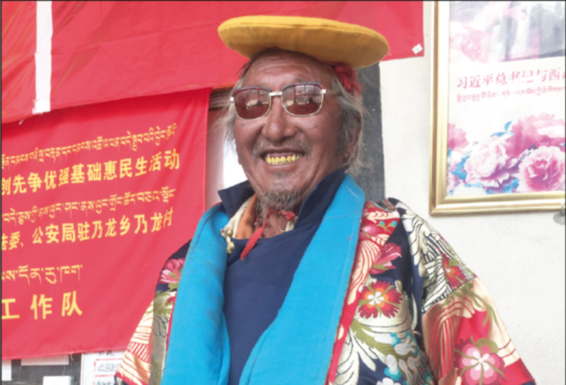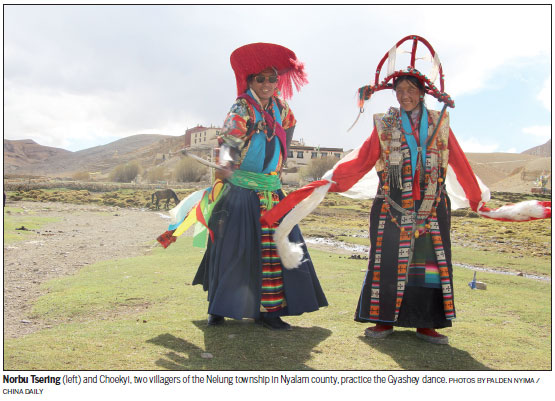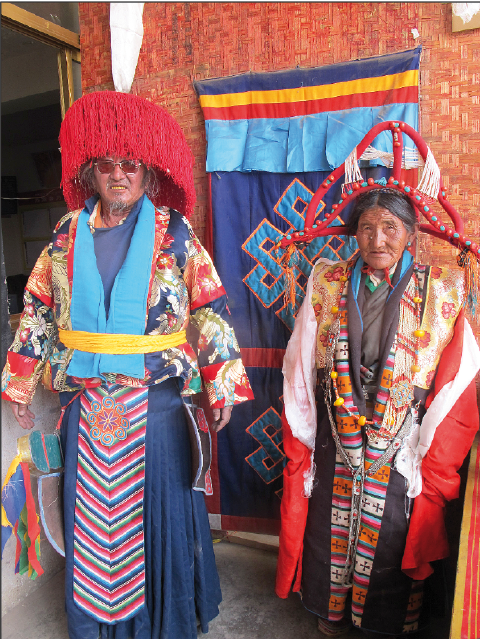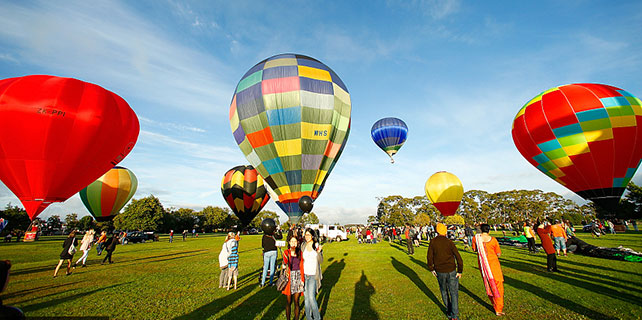Tibetan dancers strive to keep 'victory song' tradition alive
 |
|
Villager Bu Dawa displays his Gyashey costume in the Nelung township.Photos provided to China Daily |
The Gyashey dance is popular in the countryside of western Xigaze in the Tibet autonomous region, with its bold and vigorous steps, and beautiful melodies.
Some residents interpret "gya" as "victory" and "shey" as "song", saying the dance was derived from local people resisting a Nepali army invasion in ancient times.
The resistance to the invasion, led by a noble named Borang Yeshi, was successful and the Gyashey dance is said to have been created by way of celebration.
Other residents trace the origination of the dance to the marriage of Tibet's King Songtsan Gampo and Princess Wencheng in the seventh century.
"Gya" is thought to refer to "Han", as it was performed as a welcoming dance when the king met the Han Chinese princess who came from Xi'an, the capital of the Tang Dynasty (618-907), said Bu Tsering, a dancer from Nelung township.
The 64-year-old said he has been practicing the Gyashey dance for more than 30 years, and he also taught four students in his hometown the tradition.
He was once invited to perform in the region's New Year celebrations in the regional capital, Lhasa, and he was twice invited to perform in Xigaze for local festivals.

The dance was ranked as a national-level item of intangible cultural heritage in 2008.
"The dance is practiced during traditional holidays, horse races and religious rituals in monasteries," said Ngakwang, a 70-year-old dancer. "The words of the Gyashey are very clear, and the dances celebrate religious leaders, parents, hometowns, mountains, rivers, and religious offerings."
Dechen Tsomo, a Nelung official, said residents were used to making their own dance costumes, but in 2013, the government ordered factory-made costumes for them.
"The government supported us by paying more than 130,000 yuan ($19,400) for the costumes," Dechen Tsomo said.
The 28-year-old also said in order to protect the traditional culture, township employees had for several years been working to record and preserve the lyrics of the songs in the dance, and a book of lyrics will be published soon.
According to Gyatso, an elderly villager, the time it takes to perform the Gyashey ranges from several hours to at least two days for the entire dance.
 |
|
Ngakwang (right) and Bu Dawa display their traditional Gyashey costume in the Nelung township. Photos provided to China Daily |
















